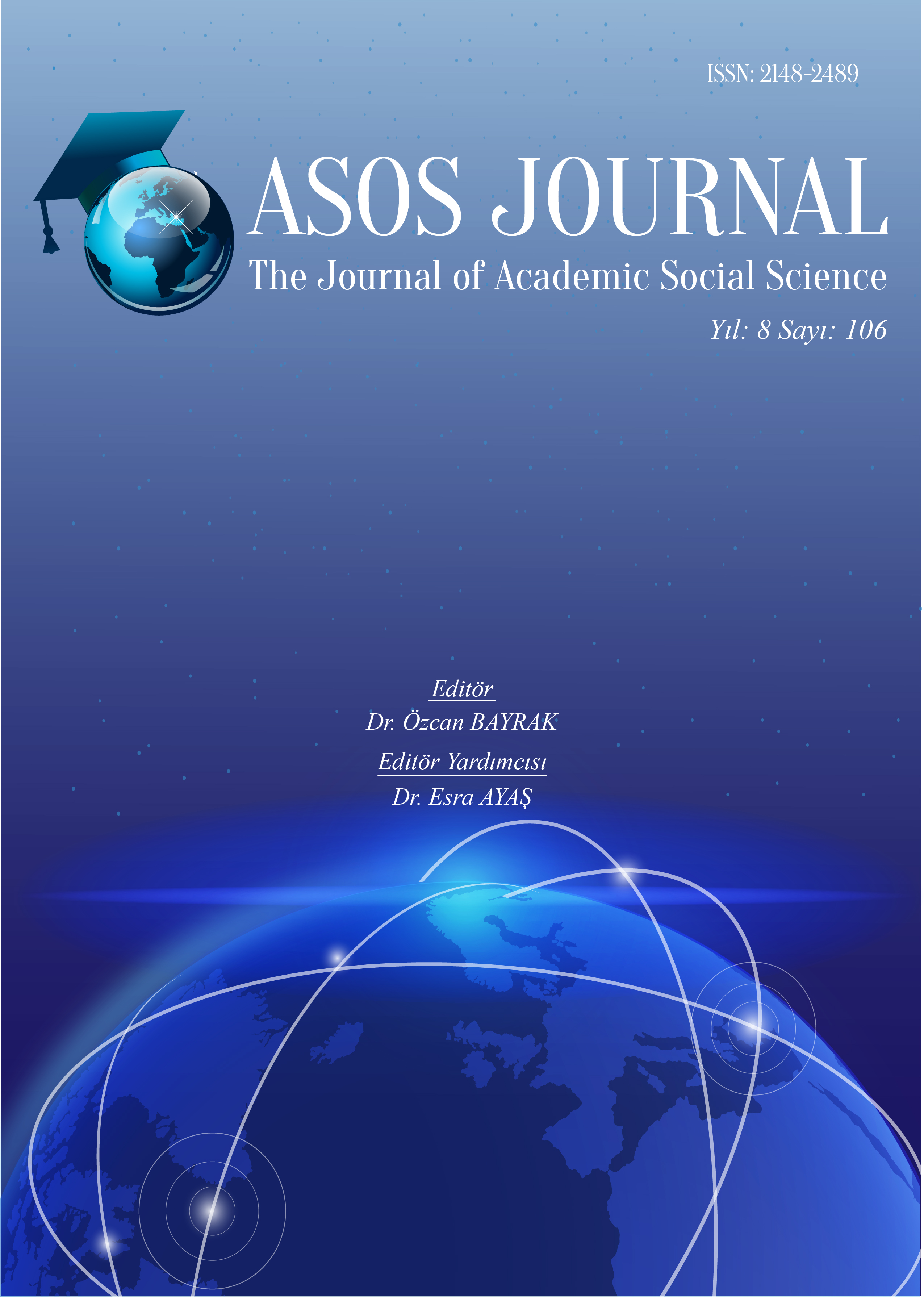Author :
Abstract
Bu çalışmanın amacı geleneksel ve alternatif yabancı dil öğretim yöntemlerinde oyunların yeri ve kullanımını incelemektir. Yabancı dil öğretim yöntemlerinde dil öğrenimi için eğitici ve önemli bir araç niteliğinde olan oyunların kullanımının ve hangi yöntemlerin oyun kullanımına elverişli olduğunun tespit edilmesinin önemli olduğu düşünülmektedir. Bu anlamda geleneksel ve alternatif yöntemlerin sınırlılıklarını ve yetersiz yönlerini bilmek gerekmektedir. Çalışmada belgesel tarama yöntemi kullanılmıştır. Geleneksel ve alternatif yabancı dil öğretim yöntemlerini konu alan Türkçe, İngilizce ve Almanca kaynaklar derlenerek incelenmiştir. Yöntemlerin birbiriyle benzer ve farklı yönleri karşılaştırmalı olarak ele alınmıştır. Bu yöntemlerin içerisinde oyunlara ne sıklıkta yer verildiği veya verilebileceği tartışılmıştır. Araştırmada yapılan karşılaştırmalar ve incelemeler sonucunda iletişimsel yöntemin ve alternatif yöntemlerden biri olan Suggestopedia yönteminin oyunların kullanımına öncelik verdiği belirlenmiştir. Bu bağlamda çalışmada oyunların dil öğretiminde daha çok kullanımına ilişkin önerilerde bulunulmuştur.
Keywords
Abstract
The aim of this study is to investigate the place and use of games in traditional and alternative foreign language teaching methods. It is considered important to the use of the games which are educational and important tools for language learning in foreign language teaching methods and to determine which methods are suitable for the use of games. In this sense, it is necessary to know the limitations and deficiencies of traditional and alternative methods. In the study, documentary screening method was used. Turkish, English and German references on traditional and alternative foreign language teaching methods were compiled and analyzed. The similar and different aspects of the methods were discussed comparatively. It was discussed how often the games are included or can be included in these methods. As a result of the comparisons and reviews made in the research, it was determined that the communication method and Suggestopedia method, which is one of the alternative methods, gives priority to the use of the games. In this context, in the study suggestions were made regarding the more use of games in language teaching.
Keywords
- Bax, S. (2003). The End of CLT: A Context Approach to Language Teaching. ELT Journal, 57(3), 278-87.
- Brown, D. H. (2001). Teaching by Principles: An Interactive Approach to Language Pedagogy. New York: Longman.
- Brown, D. H. (2007). Principles of Language Learning and Teaching. New York: Pearson-Longman.
- Dahlhaus, B. (1994). Fertigkeit Hören. (Fernstudieneinheit 5). Berlin, München (u.a.): Langenscheidt.
- Davies, P. ve Pearse, E. (2000). Success in English Teaching: A Complete Introduction to Teaching English at Secondary School Level and Above. Oxford Universty Press.
- Demircan, Ö. (2002). Yabancı Dil Öğretim Yöntemleri. İstanbul: Der Yayınevi.
- Demircan, Ö. (2005).Yabancı Dil Öğretim Yöntemleri. İstanbul: Der Yayınları.
- Demirel, Ö. (2003). Yabancı Dil Öğretimi. Ankara: Pegem Akademi.
- Doğan, C. (2012). Sistematik Yabancı Dil Öğretim Yaklaşımı ve Yöntemleri. İstanbul: Ensar Neşriyat.
- Freeman, D. L. ve Anderson M. (2011). Teaching&Priciples in Language Teaching. Oxford Universty Press.
- Güneş, F. (2011). Dil Öğretim Yaklaşımları ve Türkçe Öğretiminde Uygulamalar, Mustafa Kemal Üniversitesi Sosyal Bilimler Enstitüsü Dergisi, 15, 123-148.
- Hadfield, J. (1999). Intermediate Vocabulary Games. Harlow, Essex: Longman
- Hengirmen, M. (2006). Yabancı Dil Öğretim Yöntemleri ve Tömer Yöntemi. Ankara: Engin Yayın Evi.
- İşcan, A. (2011). Yabancılara Türkçe Öğretiminde Suggestopedianın (Telkin Yöntemi) Kullanımı, Turkish Studies, 6(1), 1281-1286.
- Jacobs, G. M. ve Farrell, T. S. C. (2003). Understanding and Implementing the CLT (Communicative Language Teaching) Paradigm. Regional Language Centre Journal, 34(1), 5-30.
- Kilp, E. (2010). Spiele für den Fremdsprachenunterricht Aspekte einer Spielandragogik. Tübingen: Stauffenburg Verlag.
- Marım, E. (2013). İkinci Yabancı Dil Almancanın Öğretiminde Yabancı Dil Öğretim Kuramlarının Uygulanabilirliği. Doktora Tezi, Ankara Üniversitesi Sosyal Bilimler Enstitüsü.
- Neuner, G. ve Hunfeld, H. (1993). Methoden des Fremdsprachlichen Unterrichts: Eine Einführung. Kassel: Langenscheidt.
- Nitsche, D. (2014). Das Spielerische Klassenzimmer: 150 Spiele für Kreativen Unterricht ohne Aufwand. Pearls of Learning Press.
- Ortner, B. (1998). Alternative Methoden im Fremdsprachenunterricht. Ismaning: Max Hueber Verlag.
- Richard, J. ve Rodgers, T. (2001). Approaches and Methods in Language Teaching. Cambridge: Cambridge University Press.
- Rixon, S. (1981). How to Use Games in Language Teaching. London: Macmillan.
- Roche, J. (2013). Fremdsprachenerwerb/Fremdsprachendidaktik. Tübingen: A. Francke Verlag.
- Rösler, D. (1994). Deutsch als Fremdsprache, Sammlung Metzler, Band 280. Stuttgart: J. B. Metzler Verlag.
- Spiele für den Sprachunterricht. (2017). http://ludolingua.de/spielen-im-unterricht/ bağlantısından 08.01.2017 tarihinde erişilmiştir.
- Talak-Kiryk, A. (2010). Using Games in a Foreign Language Classroom. MA TESOL Collection. Paper 484. https://digitalcollections.sit.edu/ipp_collection/484/ bağlantısından 17.05.2018 tarihinde erişilmiştir.





